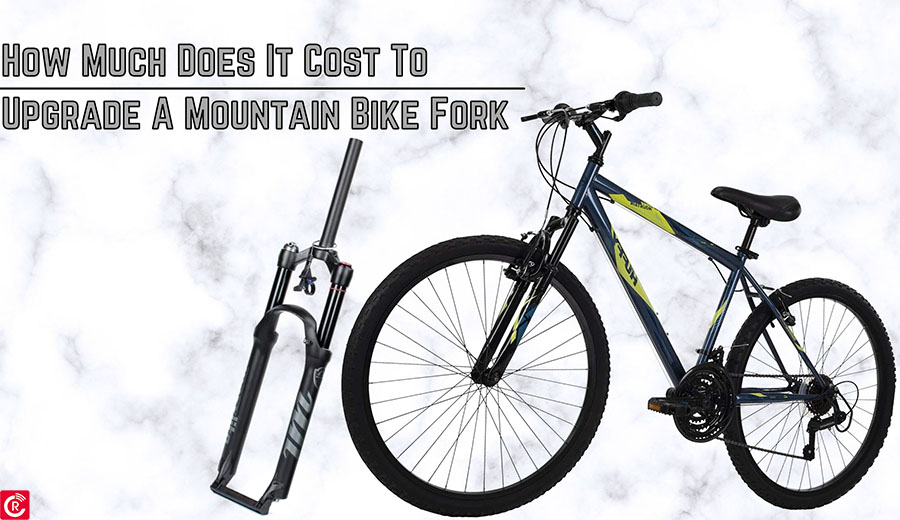
By their very nature, mountain bike forks are not all created equal. Not only are they subject to a variety of different forces upon impact, but the ideal weight, stiffness, and damping characteristics vary from fork to fork, depending on the intended use. When upgrading a mountain bike fork, many factors are considered. A rudimentary fork comprises many components: the stanchions, crown, dropouts, and the crown, axle, cartridge, and bearings. The frame is another significant part of a mountain bike fork, and it is used as a base for stanchions, crowns, and dropouts. The frame’s geometry, material, stiffness, and weight are all factors that must be considered when deciding the best fork upgrade, to get the best mountain bike out of your bike.
Check out these things considered when upgrading a mountain bike fork.
Headset: There are three main types of mountain bike headsets. Threaded headsets with a “quill” type stem found on older bike models. Because this is an older bike, it would not benefit from a fork upgrade, and a new bike would be a better investment. The one 1/8″ model is the most popular among today’s threadless headsets, with the newer tapered version available. If you have a regular 1 1/8′′ headset, you won’t be able to use a fork with a tapered steerer. Instead, you can utilize a fork with a standard steerer to fit your tapered.
Steerer tube sizes: Mountain bike fork steerer tube sizes are the most critical factors of upgrading mountain bike forks that are the essential parts of the fork. They are the fundamental links of a bike. The longer, the better for the mountain bike fork. Used to transfer the energy from the bicycle drive to the bicycle wheels. The bigger the tube size, the better stability when riding a mountain bike fork.
Wheel Compatibility: When upgrading your mountain bike fork, there are a few things you will want to consider over a fork that is different from your old fork. Several factors in a mountain bike fork are upgraded, but some can be more difficult than others. Wheel compatibility is one of those things that upgraded to give your mountain bike fork a little bit of an edge. Wheel compatibility is the ability to mount a different wheel on your mountain bike fork. It replaces the threads that mount the wheel on the fork.
Brakes: Brakes are a big part of cycling, and they play a crucial role in keeping bikes under control when you’re traveling at speed. From stopping to going, braking is a crucial part of cycling. Brakes are a significant upgrade when you’re trying to improve your mountain bike fork. There are many reasons: They allow you to stop your bike more quickly, keep you safer, And help you keep your bike in better shape. Brakes are not just about stopping. These are essentially mechanical devices that play an essential part in the way your bike is ridden.
Rebound, Lockout, Compression, and Travel Adjustment: The compression damping controls how easily and quickly the fork compresses when a bump or obstacle is hit. If it is too soft, the front wheel will compress too far on small bumps, which can cause it to dive and also makes it harder to control when in a corner.
In full-suspension mountain bikes the suspension fork is set to a near-rigid position with a lockout adjustment. It may come in useful for extended fire roads or paved sections. The adjuster for this is frequently on the top of the fork leg or linked to a remote on the handlebars. It is also a specific feature, and if you’re upgrading, you.
Forks with a compression adjustment change the spring rate for slow speed vs. high-speed bumps. It’s challenging to get it right, but it provides the smoothest riding possible when done correctly. In addition, an external adjuster on some high-end models enables you to change the travel amount quickly.
Coil or Air: You reach the entrance-level realm; most everyday forks are coil sprung or have attitude chambers that serve as springs. Coils springs compress linearly and are ideal for highly long travel downhill forks. On the other hand, coil forks are typically graver and more challenging to tune for different rider weights. Unlike a coil spring, air damping systems air does not show linear compression. The spring rate rises when air is compressed, and the fork becomes more rigid. Much assignment has been done to understand this effect, and today’s air forks handle it quite well.
Major Brands: Numerous suspension fork manufacturers have come and gone over the years. The most well-known brands are Fox, Rockshox, Marzocchi, Manitou, and Magura. Fox and Rockshox dominate the market due to their design and construction quality innovation. Marzocchi is a well-known brand for making. Manitou has been revamping its product line for several years to simplify understanding and include more contemporary designs and materials. They still trail Fox and Rockshox in terms of market share, but they’re a good brand that’s worth checking out. Finally, Magura produces XC, racing, and all-mountain forks.
Cost: When you think of the costs associated with upgrading your mountain bike fork, the first thing that comes to mind might be the cost of the fork itself. The most competitive forks tend to retail between $100 – $200, depending on the brand and model.
As you know, mountain bikers have many options to choose from when making adjustments to their mountain bike forks. They can go with a carbon-fiber fork, an alloy one, or they can opt for a cheaper alloy fork. But, of course, each fork has strengths and weaknesses. For example, alloy forks tend to be more flexible and durable; carbon-fiber forks have lighter weight and better dampening, but they can be expensive than alloy ones and may not be as durable.
Conclusion:
Mountain bike forks are one of the most critical components of your bike. If your fork is not durable, it will break and make your bike more difficult to control. The two most important factors of a fork are its stiffness and strength. These two things will significantly improve your riding experience when upgrading your fork.





